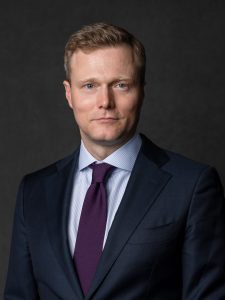Deterring Chinese strategic attack: Grappling with the implications of China’s strategic forces buildup
FORWARD DEFENSE
REPORT RELEASE
The People’s Republic of China is engaged in the most significant buildup of nuclear forces in its history. What are the implications of this buildup for international security, and what can the United States and its allies do about it? Atlantic Council Director of Studies and Scowcroft Center Deputy Director Matthew Kroenig examines what updates to US nuclear strategy are needed in light of China’s strategic forces buildup.
The Chinese People’s Liberation Army (PLA) is rapidly expanding and modernizing its strategic forces
US government officials estimate that China’s nuclear arsenal will double if not triple or quadruple within the decade, increasing US and allied vulnerability to nuclear attack. The PLA is rapidly testing and deploying nuclear-capable hypersonic missiles. China is building hundreds of ICBM silos in its western desert. Further, China has an advantage in theater nuclear forces over the United States. Finally, the PLA possesses counterspace and cyber capabilities that could be employed in a nonnuclear strategic attack.
A growing Chinese nuclear arsenal will challenge several of the United States’ most important defense and deterrence goals. It will make it more difficult to: maintain a favorable balance of power in the Indo-Pacific, deter nuclear and nonnuclear strategic attacks, assure allies, achieve objectives if deterrence fails, and hedge against an uncertain future. It also means that, for the first time, the United States will need to contend with two nuclear-armed major powers (Russia and China), both with substantial nuclear capabilities.
Key recommendations
To counter the threat from China’s increasingly assertive foreign policy and its growing strategic and nuclear capabilities, this report outlines a strategy for Washington and its allies to reliably deter Chinese strategic attack.
- Do not publicly acknowledge mutual vulnerability with China.
- Maintain a favorable balance of power over China at each rung of the escalation ladder.
- Preserve a qualitative and quantitative edge at the strategic level, including re-assessing whether the United States needs to expand the size of its deployed nuclear forces beyond the 1,550 accountable warheads permitted under New START.
- Develop more flexible nonstrategic nuclear capabilities and concepts of operations for their use in the Indo-Pacific, including by fielding the Long-Range Standoff weapon (LRSO) and nuclear-armed sea-launched cruise missile (SLCM-N). Consider developing additional options like a nuclear-armed ground-launched cruise missile.
- Maintain an effective conventional deterrent that can deny a Chinese invasion of any US ally or partner.
- Clarify the US commitment to defend Taiwan, including whether the US nuclear umbrella extends over Taiwan.
- Develop a strategy and posture to deter Russia and China (two nuclear near-peers) simultaneously.
- Prioritize China in nuclear arms control efforts, including through strategic security talks and technical exchanges, and convince allies to raise the salience of arms control in their own bilateral relations with China.
[T]he United States must make it clear to Beijing that any strategic attack on the United States, its allies, or its forces will result in unacceptable costs for China.
About the author
Subscribe
Sign up for updates from Forward Defense to hear the latest on the trends, technologies, and military challenges shaping tomorrow.

Forward Defense, housed within the Scowcroft Center for Strategy and Security, generates ideas and connects stakeholders in the defense ecosystem to promote an enduring military advantage for the United States, its allies, and partners. Our work identifies the defense strategies, capabilities, and resources the United States needs to deter and, if necessary, prevail in future conflict.
Image: Military vehicles carrying DF-31A long-range missiles drive past the Tiananmen Gate during a military parade to mark the 70th anniversary of the end of World War Two, in Beijing, China, September 3, 2015. REUTERS/Jason Lee
